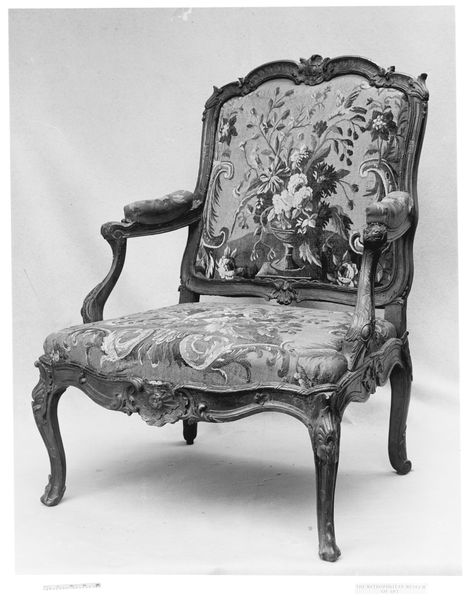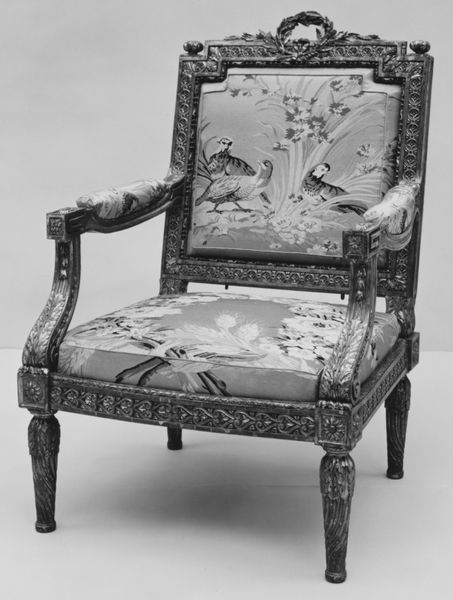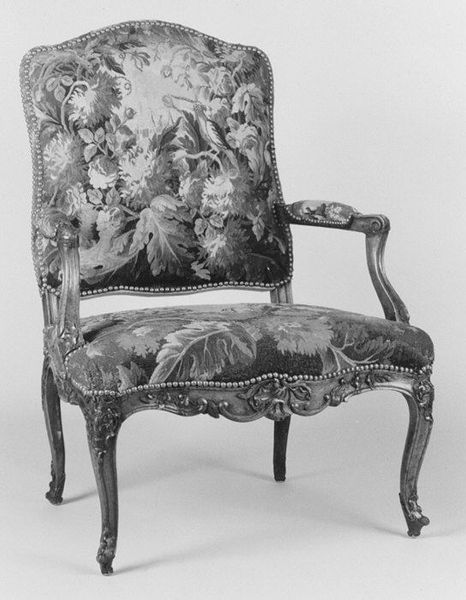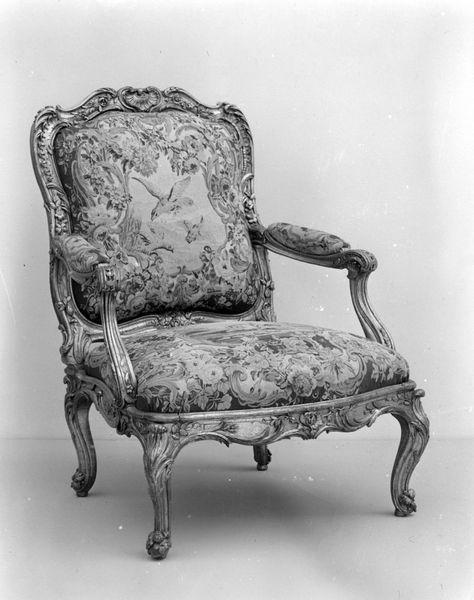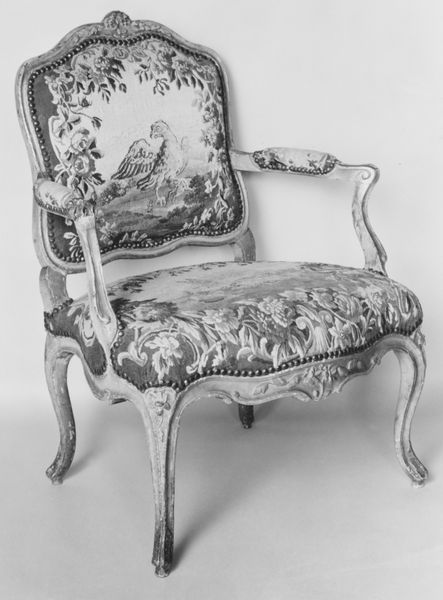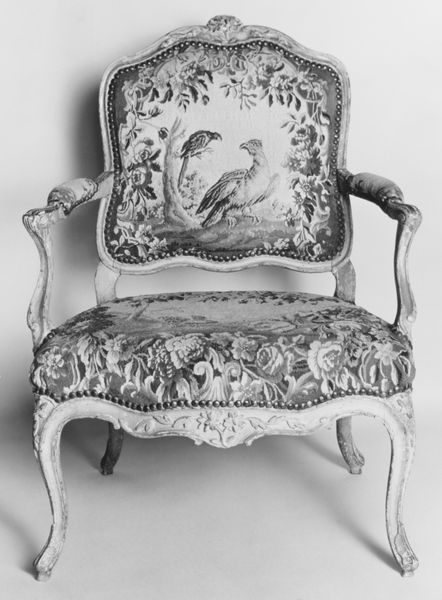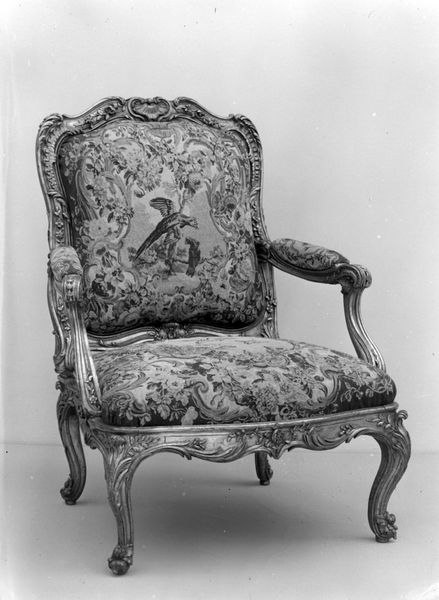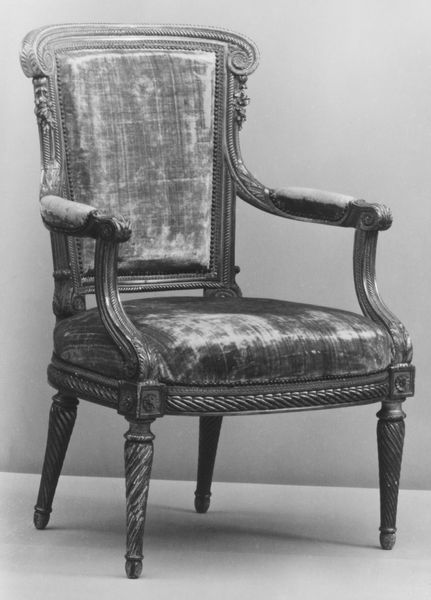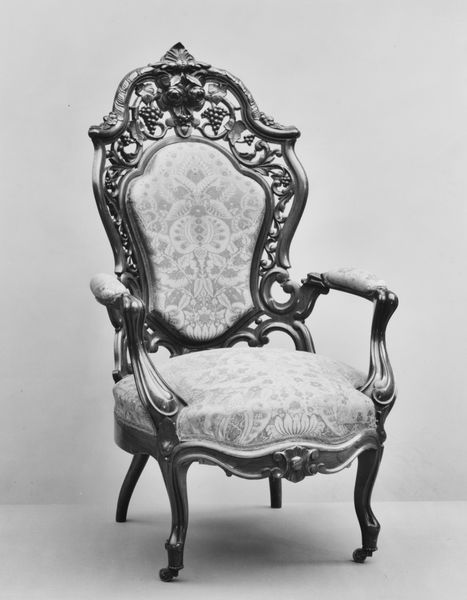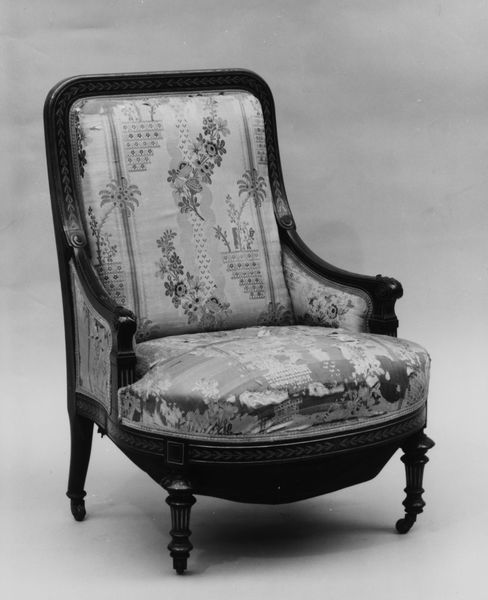
carving, textile, sculpture, wood
#
portrait
#
carving
#
allegory
#
sculpture
#
furniture
#
bird
#
textile
#
flower
#
sculpture
#
wood
#
decorative-art
#
rococo
Dimensions: 43 × 29 1/4 × 27 in. (109.2 × 74.3 × 68.6 cm)
Copyright: Public Domain
Editor: This is an "Armchair (fauteuil)," dating back to 1700-1725. It’s currently housed at the Metropolitan Museum of Art. It’s a mix of carved wood, textile, and what looks like some form of needlepoint or tapestry. It has a surprisingly regal yet comfortable look. What can you tell me about this piece? Curator: Look at the labor involved. Consider the carving of the wood frame, the sourcing and preparation of the materials, the skilled weaving of the tapestry panels. It represents a significant investment of time and skill. Who benefits from this production, and under what conditions? Editor: That's a great point, it is far from something mass-produced! Do you think the Rococo style emphasizes the material value, or tries to disguise the labor behind it? Curator: I'd argue the Rococo, while ornate, reveals more than it conceals. The conspicuous consumption is the point. Each flower, each bird motif, woven with such care. They are asserting social standing and participating in what could be considered "conspicuous consumption." The texture and richness of the fabric speak volumes about the chair’s intended environment. Editor: That’s fascinating. So, it's not just about aesthetics but also about the societal structure that allowed for such intricate creations. Curator: Exactly! We are also talking about class, right? These chairs provided employment opportunities to local communities, or specific workshops specializing in textile arts or carpentry. We should ask questions about how materials shaped the development of different styles of craftsmanship in particular regions, in the wake of specific societal patterns. Editor: That perspective makes me see it as much more than just a pretty chair! Curator: Precisely. Analyzing it this way gives a clearer idea of its role within the economic and social context of its time.
Comments
No comments
Be the first to comment and join the conversation on the ultimate creative platform.
